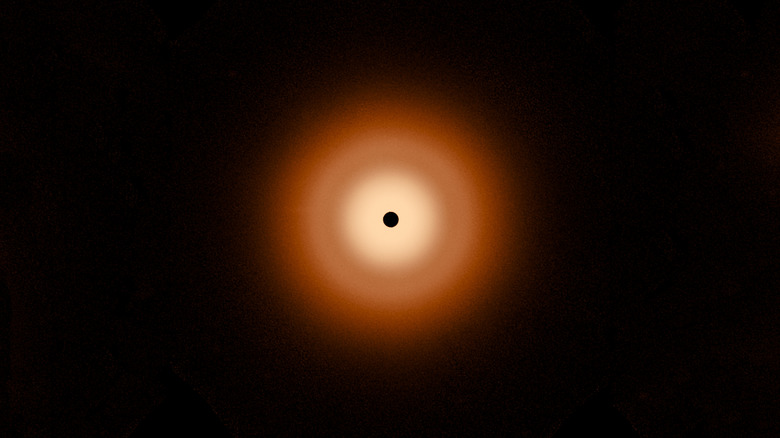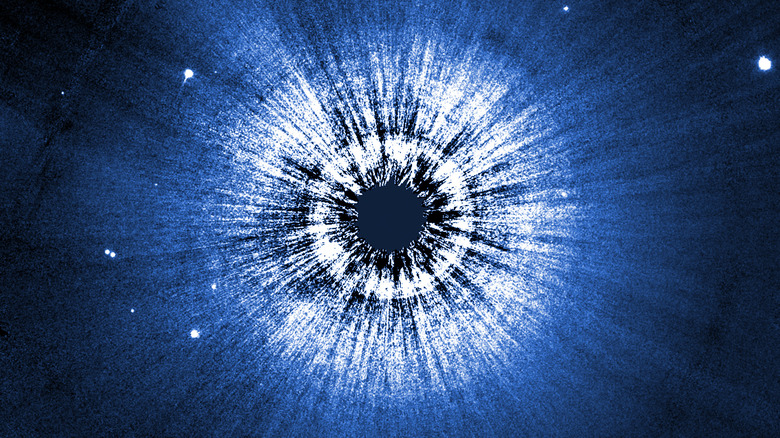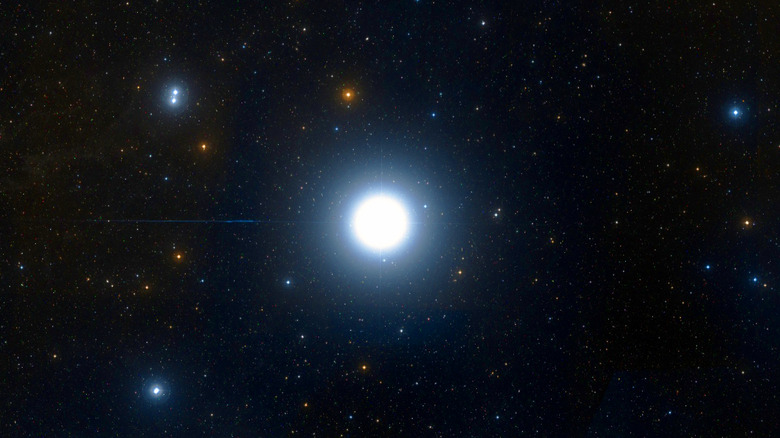Scientists Found A Baffling Object Around Vega, Our Stellar Neighbor
Vega is one of the brightest stars in the night sky, and thanks to its privileged position high in the celestial sphere, it's played an important role in the mythologies of ancient cultures around the world. Because of this prominent place in the popular imagination, Vega has also been one of the most studied stars in the heavens.
In 1850, Vega was the first star other than the sun to have its picture taken. 22 years later, it was the first star to have its composition analyzed by spectroscopy. When the system of stellar magnitude (a measure of how bright objects in the night sky are and one of the major characteristics of a star) was being standardized, Vega was one of the stars used as a baseline.
In 1984, the first debris disk orbiting another star was observed around Vega. Think of a debris disk as the leftovers from solar system formation, analogous to the asteroid or Kuiper belts. These circumstellar disks aren't exactly rare — hundreds of them have been found — but the one around Vega may be the most unique.
Vega's perfect halo
These new images of Vega's disk come from the Mid-Infrared Instrument (MIRI) camera onboard the James Webb Space Telescope (JWST) taken in 2024. What it shows is a debris disk that is precisely centered around its star, so perfectly circular that it has a mere 0.2% irregularity, and so devoid of features that it's forced scientists to reconsider what they thought they knew about Vega.
The position and shape of Vega's debris disk are intriguing simply for how unique they are. For comparison, Fomalhaut, a star very similar to Vega, also has a debris disk, but it has a much higher eccentricity that ranges from 0.12 to 0.31. Due to this higher eccentricity, Fomalhaut's disk is also offset from the center of the system, detracting ever so slightly from its aesthetic purity.
The really captivating bit of new knowledge comes from how featureless the disk is. Most circumstellar disks have lanes carved out of them by large orbiting bodies, but the disk around Vega has only a faint band in the middle separating an inner and outer ring. In other words, there are no planets where they were hoped to be.
Does Vega have any planets?
There are a few ways to find planets orbiting other stars, the most successful of which involve having an edge-on view of the star. You can measure the Doppler shift of the star as it oscillates towards you and away from you, you can measure the dip in luminosity as a planet passes in front of it, or you can measure the gravitational lensing of its light caused by the planet. In the case of Vega, its pole is pointing nearly directly at Earth, so none of those methods are viable.
Given the fame of Vega's debris disk, it was hoped that it could provide some indirect evidence of exoplanets. The most promising signs of planetary activity in a debris disk are its being offset from the center and asymmetries in its shape, and Vega's disk has none of these features. There may still be planets around Vega, but they're either too small to see or too close to Vega to resolve.
The most promising evidence for a planet around Vega came in 2021 after 10 years of observations. Based on the minute wiggles of the star, scientists say it's possible that there is a planet the size of Neptune orbiting Vega closer than the distance at which Mercury orbits the sun. This latest research doesn't rule out that possibility; rather, the researchers say that a hot Neptune would fit just fine in their debris disk model.


